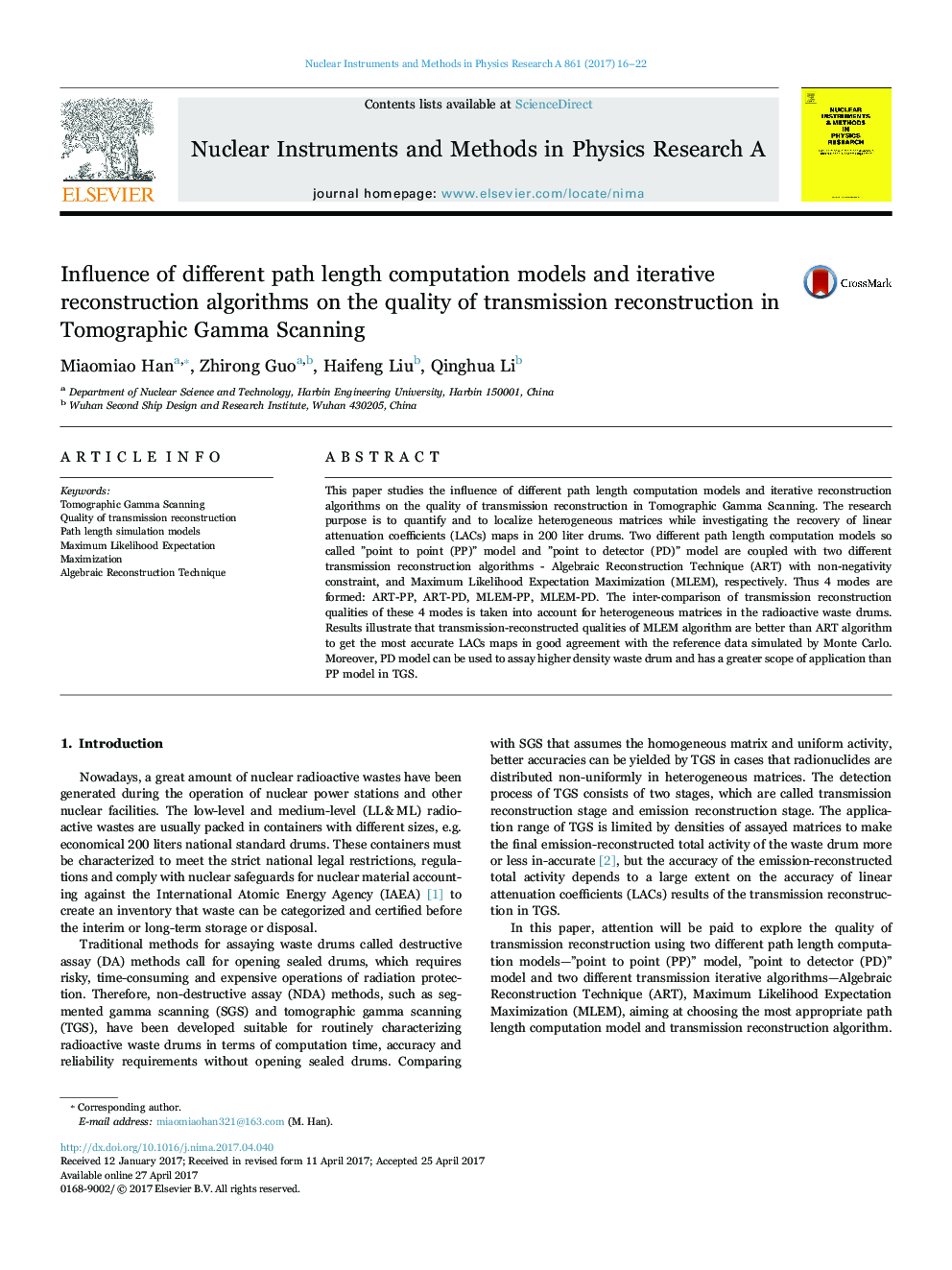| Article ID | Journal | Published Year | Pages | File Type |
|---|---|---|---|---|
| 5493349 | Nuclear Instruments and Methods in Physics Research Section A: Accelerators, Spectrometers, Detectors and Associated Equipment | 2017 | 7 Pages |
Abstract
This paper studies the influence of different path length computation models and iterative reconstruction algorithms on the quality of transmission reconstruction in Tomographic Gamma Scanning. The research purpose is to quantify and to localize heterogeneous matrices while investigating the recovery of linear attenuation coefficients (LACs) maps in 200 liter drums. Two different path length computation models so called ”point to point (PP)” model and ”point to detector (PD)” model are coupled with two different transmission reconstruction algorithms - Algebraic Reconstruction Technique (ART) with non-negativity constraint, and Maximum Likelihood Expectation Maximization (MLEM), respectively. Thus 4 modes are formed: ART-PP, ART-PD, MLEM-PP, MLEM-PD. The inter-comparison of transmission reconstruction qualities of these 4 modes is taken into account for heterogeneous matrices in the radioactive waste drums. Results illustrate that transmission-reconstructed qualities of MLEM algorithm are better than ART algorithm to get the most accurate LACs maps in good agreement with the reference data simulated by Monte Carlo. Moreover, PD model can be used to assay higher density waste drum and has a greater scope of application than PP model in TGS.
Keywords
Related Topics
Physical Sciences and Engineering
Physics and Astronomy
Instrumentation
Authors
Miaomiao Han, Zhirong Guo, Haifeng Liu, Qinghua Li,
